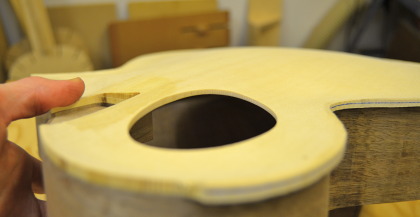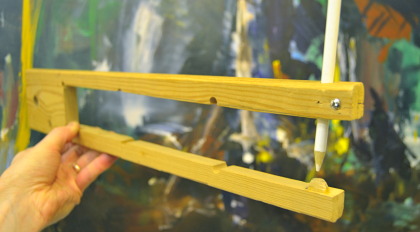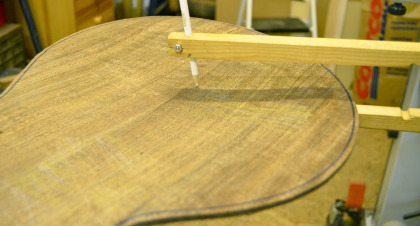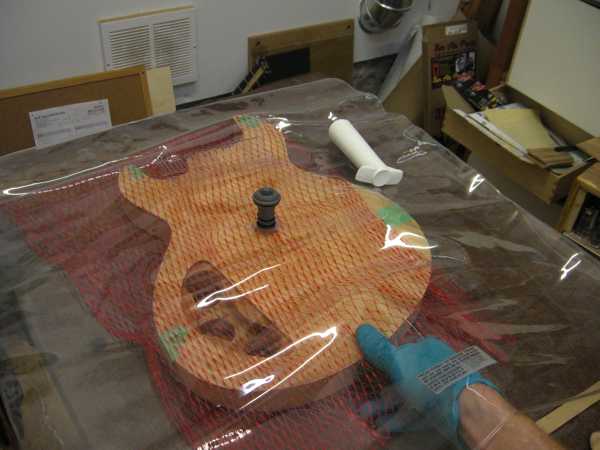The tops (and sometimes backs) of my archtop guitars are carved by hand out of thick slabs of solid wood. While the shape on the ouside is important, what about the inside? It has to be smooth like the outside, but has to be precisely the right thickness, tapering thinner towards the edges.
How do I get them so thin without carving away too much? I know many luthiers use precision-machined deep-throated calipers, perhaps even with a digital readout. There exist also sets of carefully calibrated magnets that measure using their attractive force. But I use this, probably the ugliest tool in the shop:
It's a piece of scrap wood (from a trashed ikea chair, no less), with a knob of wood glued to one arm and a pencil jammed in the other. It's a very simpe machine. And yet, it has proven to be perfect for the job at hand; simply set the pencil (white in this case for drawing on walnut; a soft artist's pencil for light woods) the desired distance from the knob and draw it across the plate like this:
Wherever the wood is thicker than the gap, the pencil leaves a mark. The arms have a bit of spring to them, so I can tell how much thicker by observing how faint or dark the pencil marks are. Then I simply plane away a few shavings and test again. By adusting the gap and looking at the pencil marks, I can also carve the plate thinner toward the edges.
It's extremely precise, it marks and measures at the same time, and it's basically free. I've been using it for sixteen years and ten archtop guitars- and only replaced the pencil once. Ugly or not, it's one of my favourite tools.










